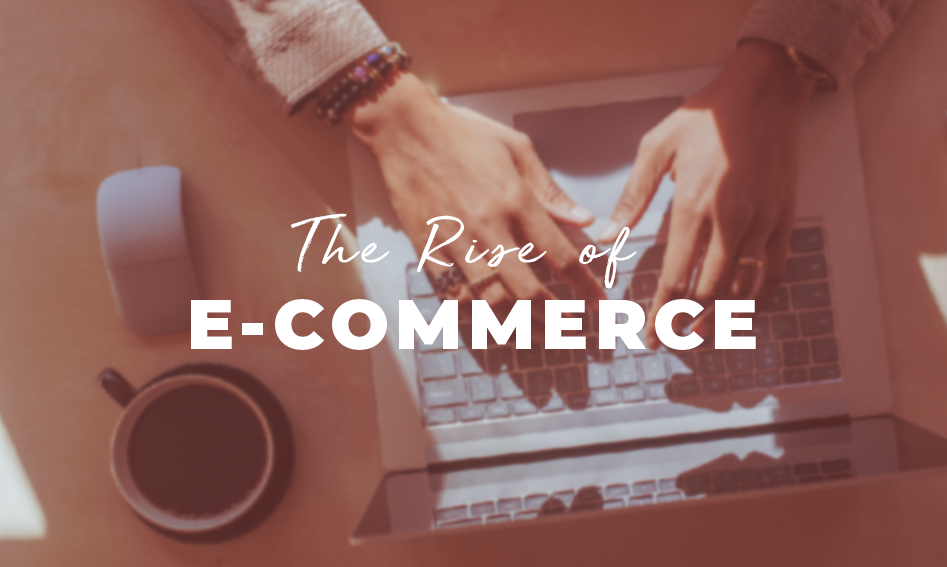Like many other businesses, we’ve observed a peak in something that has been a part of our lives for a while. However, this way of shopping has come into its own throughout the pandemic. Yes, we’re talking about the now inevitable e-Commerce!
It’s currently at an all-time high. Lockdowns and travel bans, plus retail closures, have forced the consumer to shop mostly online. Most of the world’s largest retailers had no choice but to follow.
However, the shift has brought more demands from consumers, who require their orders to have fast, free and sustainable shipping.
To better compete with marketplaces and retail giants, brands have invested in more prosperous, more personalised experiences.
Humanising their brand also helps with customer retention. It’s a top priority as acquisition costs rise, along with uncertainty in traditional advertising.
What is e-Commerce?
e-Commerce is short for Electronic Commerce. It refers to the activity of buying and selling products or services over the internet. Using the internet’s help, people can buy and sell anything they can think of, like confectionery, pet food, sports nutrition products, gardening items and many more products. e-Commerce provides platforms for people to buy or sell whatever they want at any time of day, in any time zone, in any country.
e-Commerce stores are available from any part of the world over the internet; this allows e-Commerce stores to become more accessible to customers globally and provide a passive commercial activity experience. Before e-Commerce, as we know it, was established, the dominant form of commerce was the traditional high street store.
Our high street was already slowly declining before COVID-19 existed. And whilst this form of commerce still exists, it is quickly being replaced by e-Commerce.
In an evolutionary sense, most brick-and-mortar stores are starting to transform into e-commerce stores, thereby requiring the establishment of an online presence, marketing and social media campaigns, and the ability to begin moving core business operations online.
The rise of e-Commerce is evident
People are shifting their buying habits across the world. Even those who usually never use online shopping have needed to take on a steep learning curve.
Companies that are already well-established online have already experienced increased digital sales, whilst retail shrinking has become obvious.
By the end of 2020, global e-commerce sales were expected to reach $4.2 trillion. This was explained in a report by the e-Commerce behemoth Shopify.
Despite a challenging year for retail in 2020, it is estimated that worldwide retail e-Commerce sales grew 27.6% for the year, for a total of $4.280 trillion. However, total worldwide retail sales declined by 3.0%, to $23.839 trillion.
Worldwide, e-Commerce growth could decelerate substantially in 2021, despite consumers’ newfound enthusiasm for digital shopping solutions. It has been forecasted that worldwide e-Commerce growth will downshift to 14.3% in 2021, partially because of a possible brick-and-mortar rebound.
e-Commerce is also making its way into retail settings. This is evidenced by Amazon’s first UK convenience store featuring cashier-less “Just Walk Out” technology. Shoppers can put goods straight into their bags and leave the store without needing to visit a cashier or self-scan checkout. To use the service, you scan a code as you walk in simply using an App. This retail innovation is powered by a combination of on-shelf sensors that detect when items have been removed and cameras to monitor how shoppers move around the store.
Packaging labelling plays an integral part in this. Please see our blog catalogue for more information.
Bringing e-Commerce to life in a physical way changes our perceptions of this way of life and provides more and more convenient options for businesses and future-proofs them in case of another virus outbreak.
Image Source: Shopify Plus | Global e-Commerce market size: Retail e-Commerce sales worldwide
What trends are taking precedence in 2021?
The changing economy means keeping up with emerging e-Commerce trends is incredibly important. Businesses who aren’t clued up in online campaigns need to up their marketing game to get noticed and attract customers.
Interactive product visuals, such as packaging mockups, play an increasingly large part in the way customers are looking at a product. Having a 3D online image as a substitute for a physical item is the next best thing to shopping in real life, so taking part in this should be high on the list of priorities for brands. If you need help with creating digital packaging mock-ups, please contact us!
Social commerce through celebrity endorsements has become especially popular on Instagram and Tik Tok. Influencers are being paid vast amounts of money to promote a product through their channels. Unboxing videos gain a large amount of traction and help customers view what the product is like without leaving their homes.
Personalised commerce is the next frontier in getting customers to pay for a product they haven’t even touched before. Getting names printed on packaging is relatively easy and cheap for brands; all needed is a specialised label printer. Some of our clients have already embraced this new trend and personalise their pouches and bags for their own customers, completing the full experience.
What should we expect to see in 2021?
For our customers, e-Commerce is already essential. 2021 has amplified to them that they’re heading in the right direction.
For us, the packaging is what we do. It makes e-Commerce work so well in terms of protecting the product itself.
If you need any more information regarding packaging to support your e-Commerce growth, please get in touch.
If your brand is looking to invest in quality packaging, we will guide you through the entire print process. Providing recommendations along the way to improve efficiency, reduce costs and add untold value to the end product.



